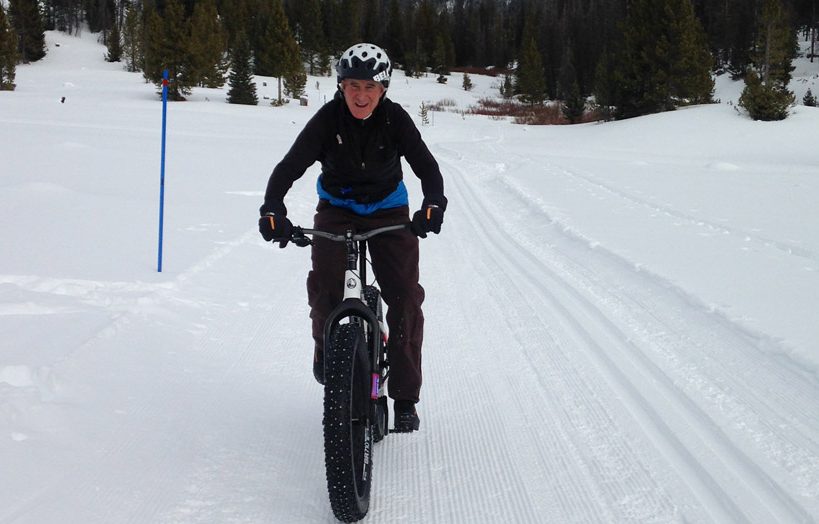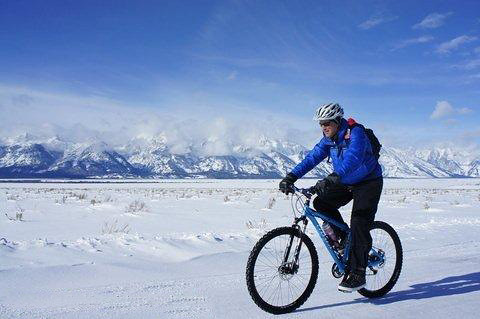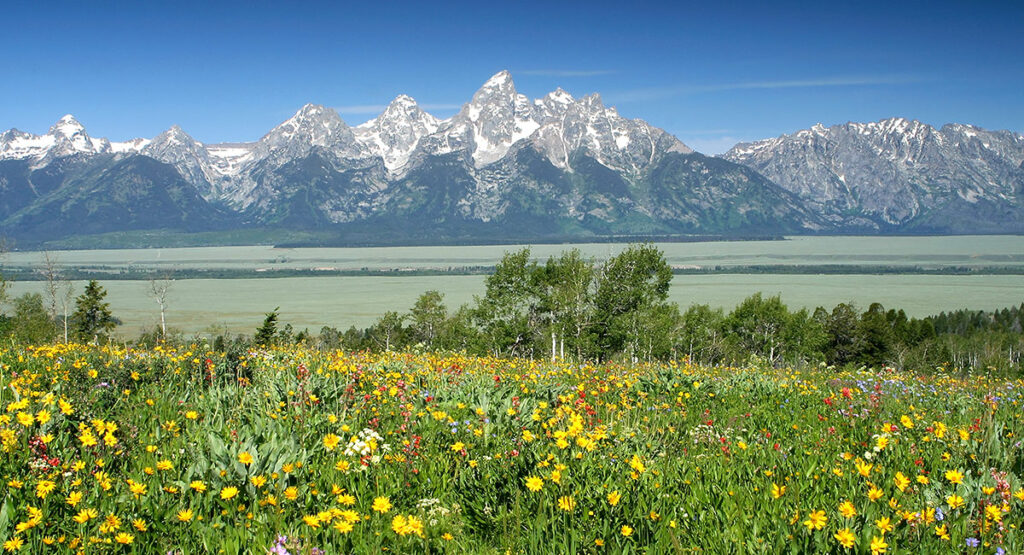David Hunger started Teton Mountain Bike Tours in 1991. In the beginning, he focused on mountain biking in the warm months. Before fat bikes came around, David ran winter bike tours on mountain bikes with studded tires, but it wasn’t really going anywhere. Then about 10 or 12 years ago, he got his first fat bike.

“I thought they were crazy right off the bat,” David said. “That’s when fat bikes weren’t really popular, but I fell in love with it and said we gotta do this.”
When he first started fat biking, David’s main purpose was to get more people involved and grow fat biking’s popularity, so he offered a lot of free clinics and demo days.
“It was basically a paradigm shift,” David said. “Everyone [thought] you needed to ride a bike on dirt or pavement, but you can ride a bike year-round if you just switch your bike. Once I got people on a bike, their heads turned, and they thought it was really cool to be riding a bike in the middle of winter.”
Gradually over the years, that idea and fat biking as a sport have gained momentum. Initially, only a few companies were involved in the market–one of which was a couple of guys out in Alaska.
When fat bikes first came out, they had two tires sewed or welded together to make what would become a modern-day fat bike. Then they continued to go wider and wider, making them rise higher off the ground and allowing for better flotation and thus a lower tire pressure, creating much better traction.

Major bike brands like Trek and Specialized initially thought that the fat bike was a trend and didn’t make fat bikes. But once it was clear that fat bikes were here to stay, they jumped on the bandwagon, helping increase popularity even more.
In February 2015, a Fat Bike Summit in Jackson was organized by Quality Bicycle Products and Teton Mountain Bike Tours. In the last five years since, fat biking has taken off.
“Is it going to replace summer biking? No, [it will] never replace the amount of dollars during the summer,” David said. “It supplements what we do and allows me to bike-year round, so I personally like it, but it’s not ever going to be what summer business is.”
David and Kris Quant were the first people to pioneer grooming for fat biking at Cache Creek. Without the Forest Service’s help, they had to do what they called human-powered grooming on snowshoes with a weighted sled. Luckily, their hard work paid off and brought the Forest Service on board to allow for snowmobiles with rollers to take over the human power today. After raising enough funds to buy a snowmobile, grooming began with volunteers and is now paid work mostly through Friends of Pathways and local bike shops.
It has been really important to David to support grooming efforts and give back to organizations that help him do the work he does. For the past five or six years, he has been voluntarily purchasing snowmobile stickers for his bikes from the state of Wyoming. With 90 percent of the cost going towards grooming the trails that David uses, he does this to give back. (David uses a lot of US Forest Service winter trails that are groomed by the State mainly for snowmobile recreation, such as the CD Trail and Gros Ventre Road).
“It’s not mandatory, we just do it for grassroots [efforts]. Do we get any credit for that? No. Does it create and build bridges when we’re out on the trails? You bet,” David said. “It’s a statement and it’s leading by example.”

David absolutely loves what he does, which has kept him going strong in the same business for 30 years.
“I started [Teton Mountain Bike Tours] because I selfishly wanted to get paid to ride a mountain bike,” David said. “I’m the envy of most bike shop owners–I get paid to ride a bike and they have to sit inside selling or repairing a bike when they’d rather be outside riding a bike.”

And there are many reasons why David loves Wyoming and has stayed in Jackson specifically for the last 30 years.
“Most of the rides we go on–both guided and personal–we’ve got a great view of the Tetons, and we’ve still got areas that aren’t discovered,” David said. “And I like the community of people here who love biking. It’s Wyoming–you can’t describe it any other way. We’re blessed to be living in Wyoming.”
You can find more information about fat biking in the 2020-2021 winter season here and contact David at Teton Mountain Bike Tours here or at (307) 733-0712.


